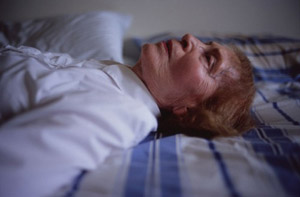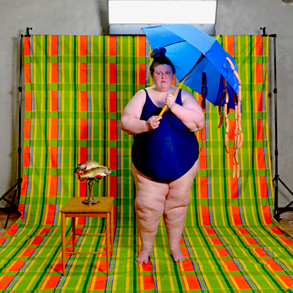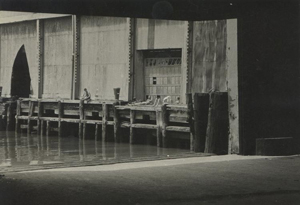Somewhere There's Music
John Haberin New York City
Love Songs, Iiu Susiraja, and Trust Me
For a moment, I could not just see it but hear it. I had come off the elevator at the International Center of Photography for a museum's silence—and for "Love Songs." As a long-ago hit begins, "somewhere there's music," and love is in the air.
Sheree Hovsepian is just one of sixteen photographers on the theme of love, in a show that began at Maison Européenne in Paris. She carefully frames her collage of ceramic, velvet, and wood, befitting the care and caring of love. The wood's smooth surfaces and curved edges that made me think of violins from a finer age in Italy or guitars as a craft today. Does Iiu Susiraja at MoMA PS1 treat photography as a discomforting love affair with herself, as if under too strong a light? Here only photography can break the silence. As the song goes, "How High the Moon." 
In "Love Songs," photography is not just an expression of love or a record of love. It is an act of love itself. For Iiu Susiraja , that love seems directed mostly at her. Not for the photographers in "Trust Me," who reach out to family, friends, romantic partners, and (lest that leave out anyone) "other networks." It is about "forging connections," but connections may prove fragile or elusive. It requires trust in others at the Whitney, but can you look at a photograph and trust in what you see?
Fragments of intimacy
Well, lunar travelers, maybe not that high. Hovsepian includes photos of a naked body with its head cut off, alluring but clinical—the whole wrapped tightly but delicately in yellow string. Is this bondage, a disturbing form of sexual desire, or the binding of her memories to keep them from slipping away? Could that be why the show runs to photocollage and work in series, like scrapbooks? ICP's curator, Sara Raza, speaks of the show as a mix tape, and each photographer might have created one to share with a lover. Still, they keep asking, is that enough to keep their love alive?
Hovsepian's physical collage is an exception, and so is actual sound to accompany three-channel video by Ergin Çavuşoğlu in Turkey. He proposes to track its site from the Ottoman court to a cement factory to its state today. Light ripples on a quiet river as traffic passes and people glide by. He could be remembering or learning when to forget. Aikaterini Gegisian almost gets physical, too, with sharp color as frame and background for her personal and found photos. She speaks of it as a record less of love than of a life passed in flea markets.
The need for a record can outlast love. Karla Hiraldo Voleau assembles photos of a relationship into a calendar, but without neat rows and columns for the days. In one shot she hides her eyes, just as she did from the evidence that her lover had betrayed her. Leigh Ledare wants a record so much that he asked his ex to photograph a return to their getaway in the woods with her new lover, for Double Bind. Display cases contain magazine clippings and more piled photos, wilting at the edges. He cannot let anything go.
Love, they agree, is beautiful but hard. Nobuyoshi Araki begins his Sentimental Journey on his honeymoon in 1971, where his wife lies asleep or sits up in bed with no trace of feeling. Sadly, too, before long he was on his Winter Journey with his wife dying young. She lies in a casket, not as an ending but amid moments of life. Dying returns with On War and Love by Fouad Elkoury in Beirut, where everyone is in exile amid Israeli and Lebanese bombs. Will they ever see each other, he keeps asking in text and photographs, or hold one another again?
Beauty is hard, too. Time and again a subject is hooded, masked or shrouded, like his male fiancé or friend for Hervé Guibert. He follows their travels across Europe in 1982, but without a storyline of lost or enduring love. Proud Flesh for Sally Mann, brutally exposed, bears the scars of muscular dystrophy. Yet it glows under the photographer's raking light. Lin Zhipeng (going by the name No. 223) subjects his lover's skin to close-ups, broken and bleeding, as a testimony to physical sensation and the senses.
For all that, they take their relationships seriously. RongRong&inri (a collective of two) views their bodies with a shared eye, as a shared art, with a shared fate. Clifford Prince King, the show's sole African American, holds up a flower, although I cannot say to whom. Collier Schorr thinks of his work as a collaboration with Angel Zinovieff. "What," he asks, "do you see when I look at you?" Maybe just home. She poses nude in the kitchen.
Motoyuki Daifu cherishes domesticity, with the single mother whom he met while she was pregnant and who has become his wife. The very first photos, from René Groebli in 1952, date from his honeymoon as well. Their Paris hotel, the very image of glamour and luxury, will have to do for home, with slippers by bed and underwear hung up to dry. After all these years, Nan Goldin still has the most powerful record of connections and desires. The Ballad of Sexual Dependency from 1973 to 1986, serves as a record, too, originally as a slide show. Now as photographs, their fragments of intimacy seem no longer sordid but simply fragile.
Too close for comfort
Iiu Susiraja spends a great deal of time alone in her apartment and her body. It is not at all clear whether she is comfortable with either one. Could she be coping with discomfort by playing for the camera? Do not be surprised if her photographs make you uncomfortable, too. They oblige you to share in her isolation while bringing you close indeed to her seriously heavy body. You may find it too close for comfort, at MoMA PS1.
To all appearances, it is a comfortable enough apartment. Susiraja lives in Turku, Finland, the nation's oldest city, with its share of attractions. Not that you would know it. The closest you come to sightseeing is the view through her bedroom window in a haze of Northern European sunlight. Even the light of day cuts her off from others. Besides, there is no getting around the figure sprawled on the bed.
She lies on her back, legs thrust forward, clothed but with no hiding her folds of fat and flesh. Her dour expression all but screams go away, but where is there to go? There is nowhere to sit and barely a place to stand—and little sign of furniture in any of her photos apart from the bed. You could not conceivably live here, she seems to say, and neither much longer can she. Meanwhile she fills the time as best she can by sticking things I dare not mention to her face and body. She holds a high-heeled boot to her face like an oxygen mask, and you may not breathe easy, too.
 Not that she lacks for creature comforts. Her kitchen has space for a clothes dryer and a cutting-edge stove, should she ever get around to using them. She may not have walk-in closets, but she fakes one well enough by standing behind a blanket. She also brings comforts of her own, like stuffed animals that play against her overstuffed body—and an oversized balloon heart that only brings out her lack of a Valentine. She throws in rubber duckies and an umbrella in case of rain, although the yellow duckies end up in the umbrella, whose clear plastic rests in her crotch on the bed. Once again, there is no getting around her bare flesh.
Not that she lacks for creature comforts. Her kitchen has space for a clothes dryer and a cutting-edge stove, should she ever get around to using them. She may not have walk-in closets, but she fakes one well enough by standing behind a blanket. She also brings comforts of her own, like stuffed animals that play against her overstuffed body—and an oversized balloon heart that only brings out her lack of a Valentine. She throws in rubber duckies and an umbrella in case of rain, although the yellow duckies end up in the umbrella, whose clear plastic rests in her crotch on the bed. Once again, there is no getting around her bare flesh.
Susiraja flaunts and defies expectations for a woman's gendered body. The umbrella handle sticks up, suspiciously like a penis, as in other photos do a banana, a fish, and whatever else comes to hand. You might see them as a mark of pride in her independence or an accusation directed at macho pride in men. Fat shaming is out these days, and shame on you, too. Still, she poses with a treadmill and an elliptical machine, not exactly working out. She may be laughing at the very thought and more than halfway ashamed.
Her props and puns have a nasty sense of humor. A show called "A Style Called a Dead Fish" sounds rather like a Monty Python routine—maybe a cross between A Fish Called Wanda and a dead parrot (and, yes, it does contain dead fish). The curator, Jody Graf, keeps things manageable as well, with an artist eager to try your patience. Susiraja's compositions risk both staginess and banality. Still, one can appreciate the play between hiding and revealing all, pride and shame, playing for the audience and for the artist alone. And there is no getting around discomfort.
Trust me
To Moyra Davey, reaching out is an ongoing project, and it keeps circling back to her. For the title work in "Trust Me," as curated by Kelly Long, she mailed identical envelopes to everyone she could trust, who handed them right back. Perhaps the differences never mattered much in the first place. Davey has taped a photo to each one, the tape as prominent as any connection. The subjects, from meds (lots of them) to trees, can seem revealing or remote. As she writes in black pen, "most people will divulge more than you would wish," and that may or may not include her.
As Bob Dylan sang, "I'll see you in the sky above, in the tall grass and the ones I love." Barbara Hammer presents Barbara & Terry, in the grass and in one another's arms. A couple of mixed race, for D'Angelo Lovell Williams, reaches out across still taller and paler vegetation. It might almost be shredded paper from Davey's envelopes. Mary Manning photographs friends just milling around, but also flowers, almost like a silkscreen for Andy Warhol. Jenny Calivas herself sinks into water or mud, perhaps never to return.
Shadow and light, too, provide a cover. Subjects for Muriel Hasbun hide not just in the reeds, but in a ghostly overexposure. Genesis Báez turns herself and her mother into multiple silhouettes and their shadows. Elsewhere she stays out the picture, connected to her mother by a thread. It might be all that remains of their love. Lola Flash settles for a single face lost in a glare, perhaps her own. 
Maybe they are all simply overexposed, under photography's harsh gaze. Still, they share strong feelings and a sense, however elusive, of place. It could be the return address on Davey's envelope. It could be the sea off the coast of Florida, where Williams goes for a swim. Is that a wheelchair on the moon for Flash? No, it is a beach in Provincetown, on a sandy hill beneath a blistering sky.
Place may refer to ancestors, much as for Hasbun—who adds the words "all the saints," both in Arabic and in the Spanish of her native El Salvador. Williams reenacts the final stage in a tortured African American journey from Nigeria to George. Place may also refer to gender and the body. After all, who can imagine connections apart from desire? Alvin Baltrop is once again cruising the Hudson River piers, like gay men in a time of Peter Hujar and David Wojnarowicz. Dakota Mace makes her prints from chemicals on paper exposed to light, because her own body cannot tolerate photographic silver, and calls them Bonds.
Susan Sontag saw photography as, inevitably, exploiting what it claims to lament or to love. Not in this show, so modest that its eleven photographers (from the Whitney's collection) could almost be one. Not when the self depends on others for its very identity and existence—and not when trust is so hard to sustain. Laura Aguilar poses with a cardboard sign, "Will Work for Axcess." For Franz Kafka, "A book is an axe for the frozen sea within us." Here art knows best the frozen sea.

"Love Songs" ran at the International Center of Photography through September 11, 2023, Iiu Susiraja at MoMA PS1 through September 4. "Trust Me" ran at The Whitney Museum of American Art through February 25, 2024.




